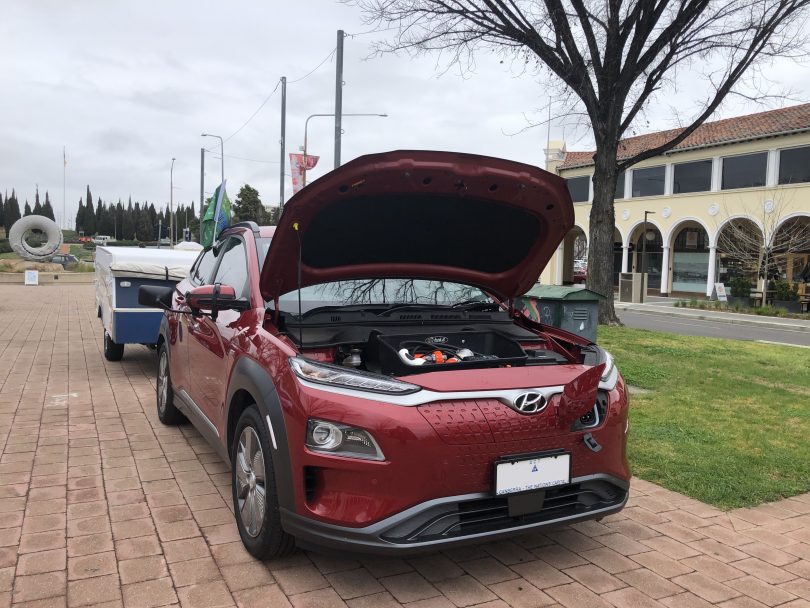
Electric vehicles at the World EV Day event in Canberra in September. Photo: Supplied.
At the beginning of the year, there were fewer than 600 plug-in vehicles registered in Canberra. Come early November and there are 1037.
More than 100 of these are Kyburz three-wheeled motorbikes used by Australia Post, while the rest are made up of electric cars and motorbikes, as well as plug-in hybrids.
This is quite surprising.
Currently the cheapest entry fee into the pure EV experience you’ll find in Australia is the Hyundai IONIQ, priced at more than $45,000. The best seller is the Tesla Model 3, starting at $69,774*. That’s quite a hurdle to get over for what is basically an ordinary car that had its petrol drivetrain replaced by a blender and some laptop batteries.
“Current ACT Government incentives are stamp-duty exemptions on new vehicles only,” Adele Craven, events coordinator for the ACT Branch of the Australian Electric Vehicle Association (AEVA), told Region Media in October. “There’s a 20 per cent discount on the registration component of a zero-emissions vehicle. And they let us drive in the transit lane on Adelaide Avenue, which is not really a big deal.”
AEVA fully supports the ‘nation-leading actions’ of the ACT Government in delivering 100 per cent renewable energy and developing its Action Plan for Transition to Zero-Emission Vehicles.

The Hyundai Kona Electric towing a campervan. Photo: Supplied.
“I’d say the ACT Government is the best and the Federal Government is the worst,” Ms Craven told Region Media at AEVA’s World EV Day event in September. This was another way of saying the Morrison government is doing the square root of diddly squat in the EV department.
Teslas, for instance, are still smacked with the Federal Government’s 33 per cent luxury car tax (LCT) – a tax brought in years ago to help nurture the local car industry. The threshold was relaxed in July 2020 to $77,565 for electric and other ‘fuel-efficient’ vehicles, but the question remains: now that we really only make WeetBix and beer in Australia, why is LCT still here?
However, the ACT is hardly one to talk.
Car buyers here – no matter the make or model – are charged both GST and stamp duty. John Howard’s goods and services tax was designed to replace the various levies of the states and territories, including stamp duty.
Transport is now the ACT’s single biggest source of greenhouse gas emissions at 63 per cent. In order to meet the target of net zero emissions by 2045, the local government has already vowed that all its vehicles will be electric by 2021 and the Transport Canberra bus fleet will be electric by 2040. But more remains to be done for the hoi polloi.
On the eve of the ACT election, the Greens saw an opportunity and promised subsidies of up to $10,000 and a target for 90 per cent of new cars to be emissions-free within 10 years.
With six of them making up the new ACT Government and three comprising the new ACT Cabinet, what can we reasonably expect?
On 2 November, Labor and the Greens signed a deal agreeing to form a coalition and work together for the next four years on several initiatives. Among these, new EVs will receive free registration for two years and 50 more charging stations will be built.
Of course, nothing is free. The rest of us are simply paying the difference, which is also what makes these incentives an ethical dilemma for some.
But if it helps, look at it this way: EV owners are also paying for things we use that they don’t, such as … er, it will come to me.
“It is pleasing to see the strong growth in plug-in vehicle registrations in Canberra during this year,” said AEVA ACT secretary Warwick Cathro.
“But that still means only one vehicle out of every 300 can be plugged in. We would love to see many more of Canberra’s households make the switch to an EV.”
Maybe now they will.
*CORRECTION: This article originally stated that the Tesla 3 started at $74,000.





















